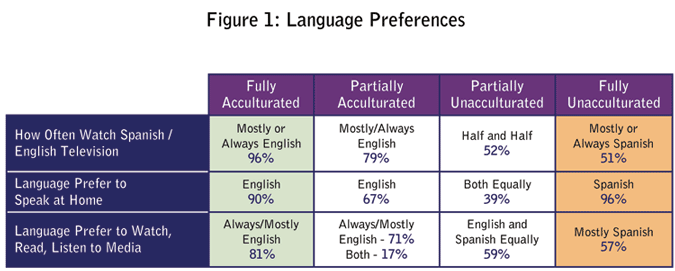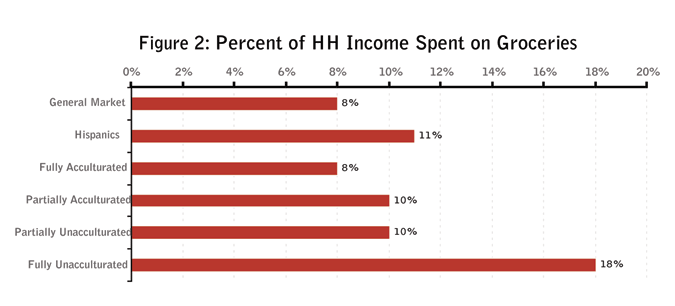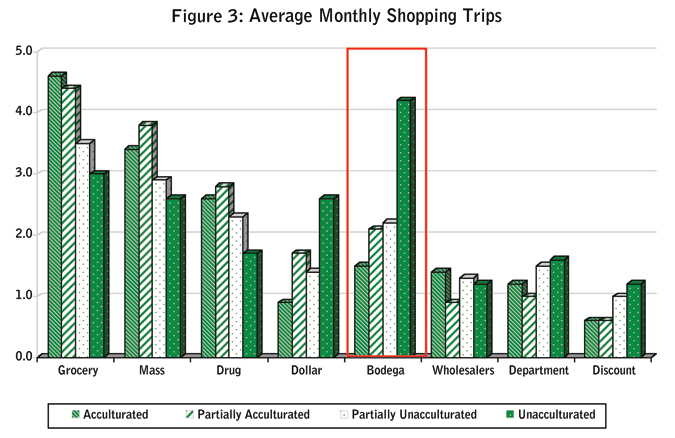Same ethnicity, different viewpoints
Editor’s note: Heidi Dickert is vice president, new products and business development at MarketTools Inc., a Mill Valley, Calif., research firm.
According to 2002 data from the U.S. Census Bureau, Hispanics are the fastest-growing segment in the U.S., comprising 12.5 percent of the U.S. population. That number is projected to reach 24 percent by 2050. They also represent an estimated $600 billion in buying power, which is expected to grow to $1 trillion by 2007, according to the Direct Marketing Association 2005 Hispanic Market Report.
Many marketers are struggling to gain a representative picture of this multi-segmented population and its unique brand preferences. This is in part due to the segment’s varying degrees of acculturation and the difficulties researchers often have in capturing survey data from them in offline and online formats.
There are multiple factors that drive the extent of acculturation. Most acculturation models include dimensions such as country of origin, Spanish-language preferences, attitudes and beliefs, fluency in English, neighborhood type and education, among others. Our firm uses English- and Spanish-language use, media preferences, time living in the U.S., and degree of Hispanic representation in the neighborhood in which they reside as the key drivers for producing four distinct acculturation segments.
Most segmentation models present two extreme groups - acculturated and unacculturated. However, our research shows two other distinct groups that fall in between these two extremes - the partially acculturated and partially unacculturated segments. The partially acculturated group is often mislabeled as fully acculturated because these individuals live and behave similarly to their fully acculturated counterparts. However, they hold on to certain key Hispanic traditions and beliefs. And those traditions and beliefs impact where they shop, what they buy, their opinions of the brands they see every day and their media usage patterns. Consistent with their fully acculturated counterparts, 80 percent of partially acculturated consumers choose brands and stores because they feel they are getting a better value compared to only 65-70 percent of their fully unacculturated counterparts. Twenty percent are watching Spanish vs. English media for the majority of the television viewing time.
Furthermore, our recent advertising tests found that consumers in this segment have diverse opinions about and varying levels of identification with the characters and images in Hispanic ads. In tests, many partially acculturated consumers strongly identified with the traditional characters and felt the situations portrayed mirrored those of their everyday life. Others believed the characters and images reinforced negative cultural stereotypes that they did not wish to see depicted in advertising.

The partially unacculturated group continually diversifies and experiments with new products and services. This is due, in part, to greater disposable income than the fully unacculturated group. Yet they still identify very closely with the Hispanic community - it is a part of their heritage and they have no intention of leaving it behind. In fact, 57 percent of partially acculturated Hispanics still shop in neighborhood bodegas on a monthly basis, and 25 percent shop on a weekly basis or more often. Additionally, 80 percent are watching Spanish TV on a regular basis, and 31 percent are watching four or more hours of Spanish TV per week.
Greater share on groceries
Among the Hispanic segments, the partially unacculturated and fully unacculturated groups spend the greatest amount of money per household weekly on groceries. The fully unacculturated group spends nearly 20 percent of household income on groceries; fully acculturated Hispanics more closely resemble the general population, spending less than one-tenth of their annual income on groceries (Figure 2).

The fully unacculturated segment has lower household income but spends a greater proportion of income on groceries than the other acculturation segments. This could be due to larger household sizes. The frequency of bodega and non-bodega shopping is strongly linked to varying levels of acculturation (Figure 3). Bodegas are small local stores catering to the everyday necessities (primarily food) of Hispanics. Consumers in the fully unacculturated groups shop there more frequently. Since it allows them to socialize among their “own” people, who share the same cultural roots, shopping in bodegas may be an externalization of this segment’s unspoken aspirations to hang on to the Hispanic culture. In addition, the more frequent bodega shoppers tend to have lower household income and may focus more of their spending on necessities. The bodega shopping basket tends to have a higher dollar value, which is likely caused by higher prices in the bodega channel.

Measurement differences
Capturing all four of these distinct acculturation segments online for research purposes is challenging. While the fully acculturated Hispanic spends on average 20 hours per week on the Internet, less than 50 percent of unacculturated Hispanics spend two or more hours per week accessing English and/or Spanish Internet sites. Despite common perception, English-language sites are popular among all acculturation levels. Across all segments, their primary use of the Internet still centers around communication with friends and family or accessing news and information. Online shopping and bill paying are also common, but only among the acculturated segments.
Offline sampling is typically done to reach these offline unacculturated/Spanish-language-dominant consumers. While offline methods may appear to offer the perfect answer, it is more likely that partially or fully unacculturated Hispanics will be the primary groups recruited into offline studies due to common profiling and screening practices. Hispanics from mixed backgrounds and specific Latin American countries may not exhibit the stereotypical physical characteristics and language choices and therefore may be passed over as potential respondents.
In addition, most offline studies are concentrated in urban vs. non-urban areas in an effort to identify respondents quickly. The distribution of acculturation segments is most predictable among the most and least acculturated segments. Specifically, the acculturated segments are more likely to live in suburban/rural areas, while the unacculturated segments are more likely to live in urban neighborhoods.
While the mix of acculturation segments living in suburban areas is rapidly evolving to include more of the unacculturated segments, sampling coverage of both urban and rural areas today assures representation from both ends of the acculturation spectrum.
Dramatically skewed
As a result of these natural method biases, research findings can be dramatically skewed. Hispanics who are more acculturated tend to buy mainstream/new products. The less acculturated are more loyal to brands they already know and value. However, not all brands and products are available in non-urban areas. These factors can directly affect the purchase interest of new products, awareness trends and other key research-related data.
It is important to note that the extent of differences in attitudes may depend largely on the category of products. That being said, in many of our recent studies, offline respondents’ purchase interest scores were more than 50 percent higher than online respondents’ scores. Many assume that this is due to scale bias issues within the Hispanic population. However scale bias is a much more substantial issue for the fully unacculturated segment and can overshadow the true opinions of the remaining three segments. In a relative comparison test, these differences are often disregarded as one winner is chosen among many. The challenge is trying to determine just how much interest there is in a concept or product in absolute form among the Hispanics, compared to the general population.
Understanding the purchase interest among the four segments is one step toward making a more educated decision on whether or not a product will have broad appeal to the Hispanic market. With at least three-fourths of the segments providing a more accurate evaluation of their opinions and evaluations, this data can be used in conjunction with the fully unacculturated segment data to gain a more accurate expectation of in-market acceptance.
Evaluate objectives
When choosing the appropriate Hispanic sample, researchers need to first evaluate their marketing objectives. Will your media plan be national, regional or local? Will your media have different brand messages communicated in different languages? Are you concerned about a different brand identity among the different acculturation segments based on different executions across Spanish and English media?
Here are some quick Hispanic research tips to consider:
- Be careful how you refer to Hispanics while conducting research. Many believe that Hispanics prefer the term Latino. However, our research indicates that all groups have a strong preference for the term Hispanic vs. Latino, even among the fully unacculturated segment.
- Offer a survey in both English and Spanish to all survey respondents. Do not assume that an individual in a specific segment will take a survey in English or Spanish. Do not assume they will choose the same language on every occasion.
- When conducting advertising testing, do not assume that Spanish-dominant consumers are the only ones watching Spanish media. There is a proportion within each segment that watches varying degrees of Spanish media.
Rapidly diversifying
As you can see, the growing Hispanic populations have diverse shopping and media preferences. That is why it’s critical for marketers and researchers to keep abreast of the four acculturation segments. To best meet their marketing objectives, clients should use a truly representative sample and method that targets the relevant acculturation segments they are choosing to reach. Assuming that either fully acculturated or unacculturated Spanish-speaking Hispanics will represent the entire U.S. Hispanic purchasing audience can lead to potentially misleading market conclusions and decreased product sales or brand value.
